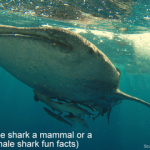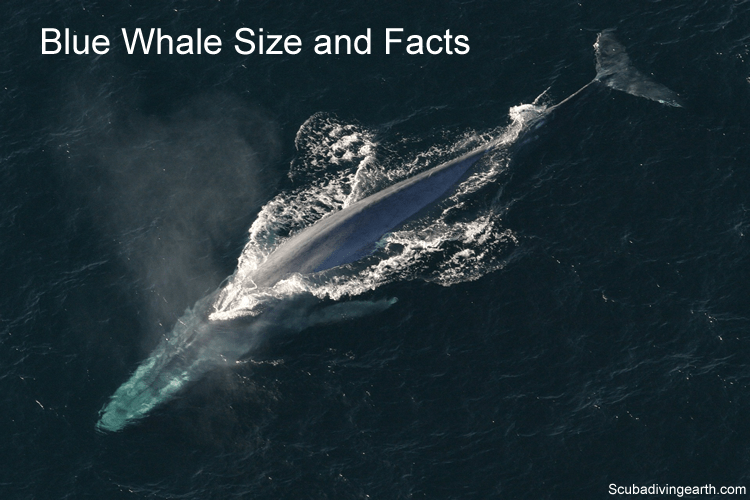
The largest creature to have ever lived on planet earth; the magnificent blue whale.
So far the blue whale has alluded me. My visit to the USA’s west coast for my 50th with the prime purpose to see blue whales failed! I’ll have to go again!
The blue whale size is 30 metres (100 feet) in length. They can weigh as much as 200 tons and have a heart that can pump between 200-300 litres (44-65 gallons) of blood with every beat. The largest animal that’s ever lived on planet earth can live for over 100 years and has a tongue which weighs as much as a female African elephant.
The best way to do more diving, and you never know you may see a blue whale, is to book yourself on a scuba diving liveaboard. You can check the latest and best deals on liveaboards using the following window:
Why an article on blue whales?
You may be wondering why I chose to write about blue whales on my scuba diving blog. A good question.
Well I figured many scuba divers are alike. Which means that if I’m interested in all creatures that live under the waves (which includes the blue whale), then most divers would too.
So when I came across some interesting facts about blue whales, I got sucked in.
I hope like me that you find this article interesting.
If you were to find yourself scuba diving next to a blue whale, this is how insignificant you’d be. From the image below, which I’ve borrowed from wikimedia on the blue whale size, you’ll see how colossal these sea dwelling mammals are.

Blue whale size compared to a scuba diver

Blue whale size myths
It’s true that the blue whale is bigger than any of the dinosaurs that roamed the earth and swam in the seas. But there are many myths around the size of the internal anatomy of a blue whale.
The first of these myths is in relation to its heart.
Blue whale size myth #1: A blue whale’s heart is the size of a small car like a mini
I heard it said that the heart is the size of a small car similar to a mini or VW beetle. This fact about blue whales is not true.
The truth is blue whales have a heart:
- Their heart is 1.52 metres (5 feet) long.
- 1.22 metres (4 feet) wide.
- 1.52 metres (5 feet) tall.
- The blue whale’s heart weighs around 181kg (400 pounds), which is 181,000 grams (6,400 ounces).
- This huge heart is capable of pumping well over 200-300 litres (44-65 gallons) of blood per beat. As a comparison a beer barrel in the UK holds about 164 litres (36 gallons) and in the US this is 141 litres (31 gallons).
Even with the blue whale heart myth busted it’s still the biggest heart on the planet.
Compare this to the heart of:
- An elephant’s heart weighs around 13.61kg (30 pounds) – That’s 7.5% of the size of the blue whale’s’ heart.
- A human heart is roughly 453 grams (16 ounces) – That’s less than 1% (0.25%) the size of a blue whale.
- The human heart pumps 60 to 90 millilitres (2 to 3 ounces) of blood per beat. Which in comparison to a blue whale that’s minuscule.
Blue whale size myth #2: A blue whale’s aortic artery is large enough for a baby to crawl along
The second myth to be busted about the size of a blue whale is the diameter of its aortic artery.
It has been said that the aortic artery is big enough for a baby to crawl along. However, when you watch the video below about ‘How big is the blue whale’s heart,’ you’ll see this isn’t the case.
How big is a blue whales heart video
Jacqueline Miller from the Royal Ontario Museum shows off a massive blue whale heart.
Blue whale myth #3: Blue whales aren’t actually blue
Blue whales aren’t actually blue. The colour of a blue whale mottled blue-grey colour when on the surface. They only look blue when they are underwater, which is where they got the name from.
The size of a blue whales young
Blue whales give birth to calves which are almost as large as the biggest fish in the oceans.
The baby blue whales are huge right from birth. Measuring in at around 7-8 metres (23-26 feet) and weighing 3 tons or 2,700kg (5,953 pounds). This is more than the weight of a fully grown hippopotamus!
The largest fish is the whale shark, which can grow as large as 18 metres (60 feet). A fully grown whale shark weighs in at over 21,000 (46,300 pounds). Although this is much larger than a new borne blue whale, the young calf soon catches up. Baby blue whales put on around 441kg (200 pounds) per day.
Which means that after about 90 days or approximately three months, the baby whale will be the size of a fully grown whale shark.

Blue whale facts
Interesting facts about blue whales.

Blue whale fact #1: Blue whales are giants but gentle giants
The blue whale can grow to over 30 metres (100 feet) in length. This is comparable to the length of a Boeing 737-600 aeroplane, which is 31 metres (102 feet) in length.
Other comparable blue whale sizes:
- The size of a blue what is the equivalent to three American school buses.
- Or they are three-times the size of a Triceratops dinosaur.
- If a blue whale stood up virtually on its tale it would stand as tall as a building with 10 stories.
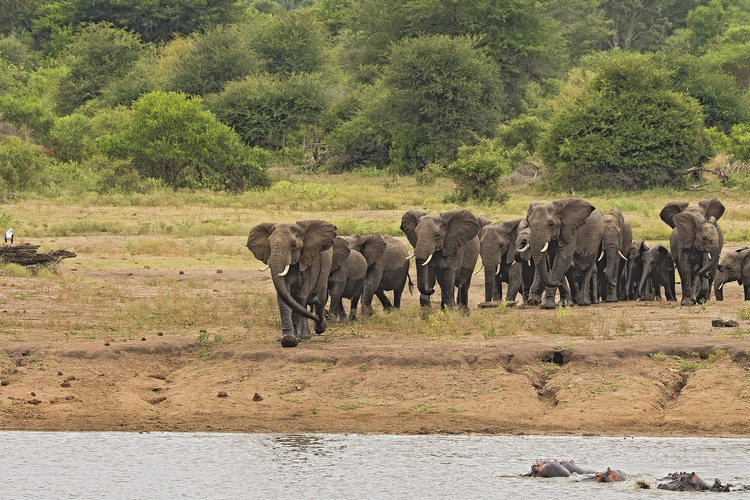
Blue whale fact #2: Weight of a blue whale equivalent to 23 elephants
A fully grown blue whale weighs up to 200 tons or 82,300kg (181,000 pounds). If you compare this to a female African elephant, which weighs around 3,600kg (7,940 pounds). That’s equivalent to a herd of nearly 23 elephants.
The reason why a blue whale is able to sustain its enormous size is because of the buoyancy of water. Whereas land animals are restricted by gravity to what their skeletons can support.

Blue whale fact #3: The sound made by a blue whale is one of the loudest sounds of any animal made
Blue whales have one of the loudest calls in the animal kingdom. The sound of their call registers at 188 decibels.
To put this sound into perspective:
- Normal human conversation is about 60 decibels.
- A loud rock concert is about 120 decibels.
- A jack hammer is around 100 decibels.
- A jet engine is about 140 decibels.
- Their loud calls have been record from as far as 800 kilometres (500 miles) away.
- Blue whales can hear each other for up to 1,600 kilometres (1,000 miles) apart.
The sounds they use are used for communicating with each other, as well as being used to sonar-navigate the oceans.
17 October 2013: A singing blue whale was recorded by an Ocean Sonics icListen low frequency hydrophone deployed at 2662m depth in Cascadia Basin. The audio has been sped up by a factor of 10 to make it audible, as blue whale sounds are subsonic (below the range of human hearing).

Blue whales fact #4: Blue whales can live to 80-90 years
The average lifespan of a blue whale is around 80-90 years, which is similar to humans. But the oldest blue whale so far discovered was found to be about 110 years old.
The age of a blue whale can be determined by its earwax. This is because about every six months a new layer of earwax forms inside its ear canal. This earwax helps to protect the ear and helps to carry sound waves to the ear too.
The way in which a blue whale’s earwax builds-up is how it can be used to determine its age, similar to counting the rings on a tree
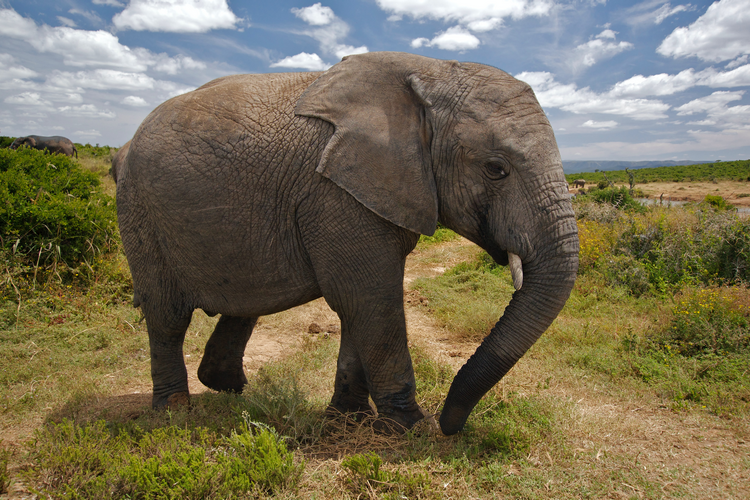
Blue whale fact #5: What blue whales eat
Blue whales can eat around four tons or 3,600kg (7,940 pounds) of food every day. This is more than the weight of a female African elephant.
Despite the blue whale’s size they actual eat one of the smallest animals in the oceans. Blue whales mostly eat crustaceans called krill.
They feed by scooping up the krill in their large mouths and then filter out the water using baleen bristles which line their month.

Blue whale fact #6: The size of a blue whale’s tongue
The tongue of a blue whale can weigh as much as an elephant, which is around 3,600kg (7,940 pounds).
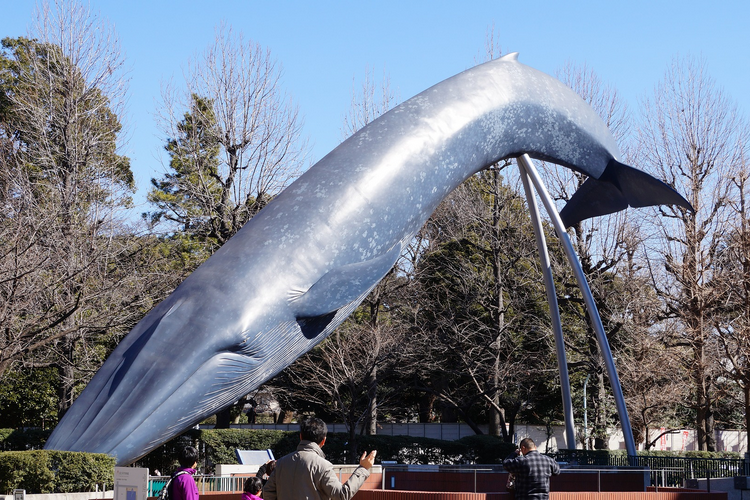
Blue whale fact #7: Speed of a blue whale
Blue whales generally cruise a speed of about 8KPH (5MPH) per hour. But have been known to swim at speeds of up to 32KPH (20MPH) too.
Blue whales travel great distances from their summer feeding in polar regions. The make this long trip to the Equator when winter sets in.
Blue whale fact #8: Do blue whales breach
Blue whales rarely breach like humpback whales, but as seen in the video below they do sometimes breach.
This is probably the closest you can get to a blue whale breaching from what I have seen. Whether one defines it that way or not is a different story…no hair splitting…whatever it was it was cool! Just enjoy the footage.

The future for the blue whale – now a protected species
Once hunted for their baleen and other body parts, the blue whale is now a protected species.
The whalers discovered that blue whales held valuable oil and until 1967 they were killed in large numbers each year.
It’s estimate by the WWF that between 1904 to 1967 more than 350,000 blue whales were killed in the Southern Hemisphere. In 1931, during the heyday of whaling, an astounding 29,000 blue whales were killed in a single season.
Blue whales are recovering, but very slowly. It’s estimate that around 25,000 are alive in the oceans today. There is an estimated population of around 2,000 blue whales off the coast of California.
Where is the best place to spot blue whales
- Monterey Bay, California coast.
- San Diego, California.
- Baja California Sur, Mexico.
- Pico Island, The Azores.
- Mirissa, Sri Lanka.
- Newfoundland.
- Iceland.
Although I was unlucky and didn’t see any blue whales when I visited Monterey and San Diego California, this is one of the best places in the world where it’s likely to see one.
Between the months of June-July through to early October these magnificent creatures are spotted swimming along the Californian coast.
The website I used to work out the best time to visit was this one Monterey Bay Whale Watch. Although in the end my research didn’t pay off, as I didn’t see one, but that’s nature.
2018 saw a spike in sightings of blue whales, as reported in SF Gate.
My friend, who lives in Del Mar (near San Diego) California reported seeing many blue whales just off the coast. He could see them from the shore near to his home. He was trying to encourage me to go back out, as he knew I’d missed them the previous year. But unfortunately the timing didn’t work for me.
Pico Island, The Azores blue whales
The Azores is a volcanic archipelago of 9 islands in the Atlantic ocean.
The Azores is a place to go scuba diving as well as whale watching. Whales that are seen around the Azores include blue whales and sperm whales. The best time to visit for the chance to see blues is February to March.
That being said, if you want to swim with a blue whale you may wish to visit Sri Lanka instead.
Mirissa, Sri Lanka – swim with blue whales
Sri lanka is one of a handful of places in the world where swimming with blue whales is permitted.
Seeing a blue whale is on many scuba diver’s bucket list (in fact not just scuba divers).
Imagine not only seeing a blue whale, but then having the opportunity to get into the water with the largest animal that has ever existed.
To have this experience, you must go swimming with an experienced and competent guide and always be respectful by keeping your distance from the whales.
But this would be amazing and is on my bucket list. Seeing and swimming with blue whales in Sri Lanka is best done between March and April.
Blue whale found of the coast of Newfoundland
The above video about the blue whale and it’s heart was taken from a blue whale found in Newfoundland in 2014.
Although the death of this magnificent creature was tragic on the one hand, on the other hand it provided a useful scientific reference point.
In May 2014, a small ROM team travelled to Newfoundland to salvage a Blue Whale that had washed ashore for the ROM’s collections. This unfortunate event presents an unprecedented opportunity to study one of the more endangered species of marine mammals.
I hope you enjoyed this article about blue whale size
I’d love to hear from you. Tell us about your adventures of diving and snorkeling, in the comments below. Please also share your photos. Either from your underwater cameras or videos from your waterproof Gopro’s!
If this article hasn’t answered all of your questions. If you have more questions either about snorkeling or types of scuba diving (or specifically about blue whale size), please comment below with your questions.
There will also be many more articles about scuba diving (and snorkeling) for you to read and learn about these fabulous sports.
Have fun and be safe!

